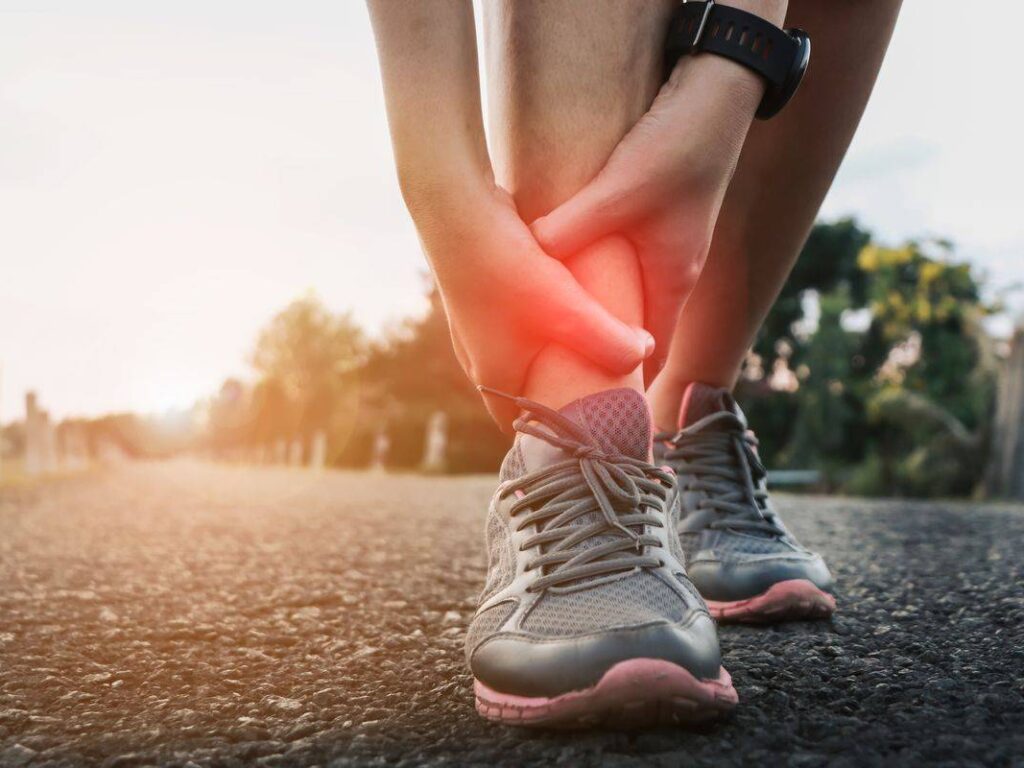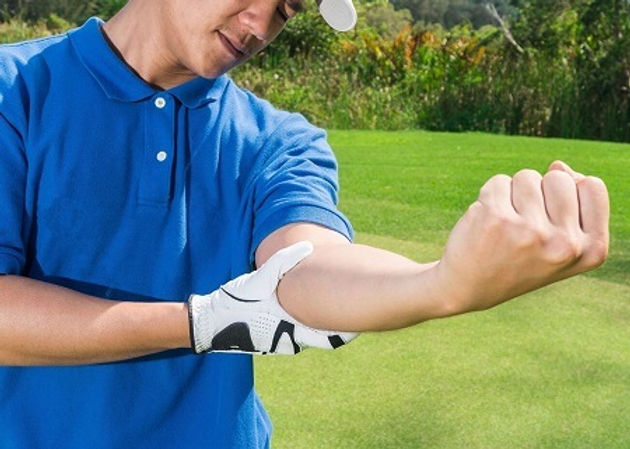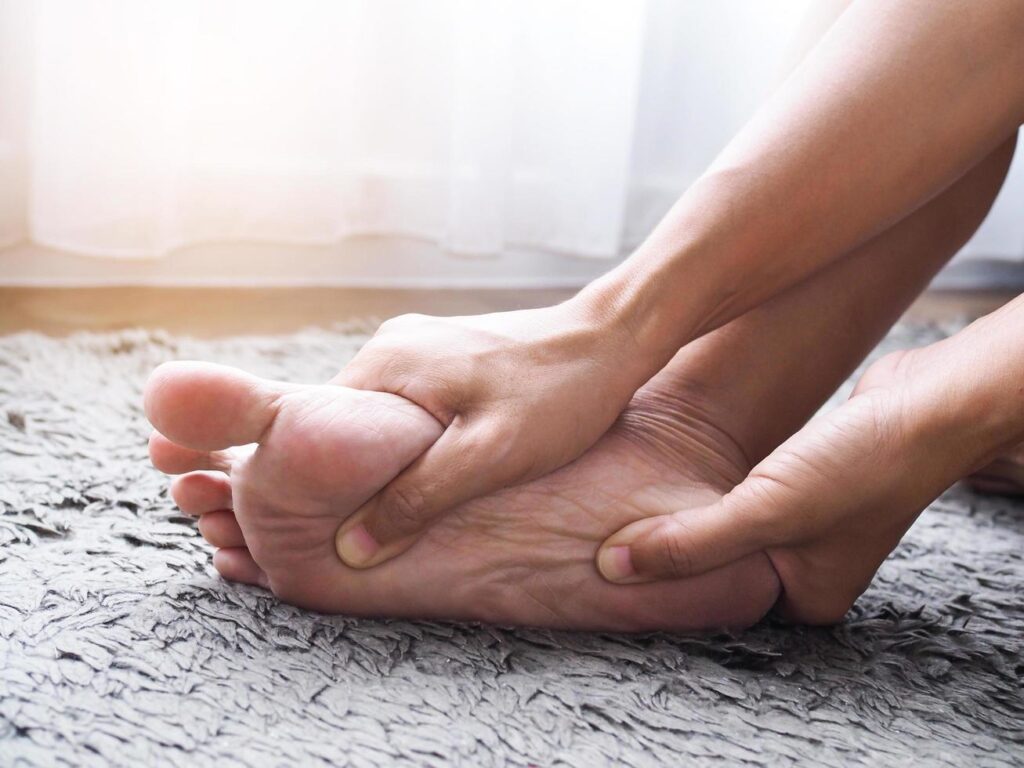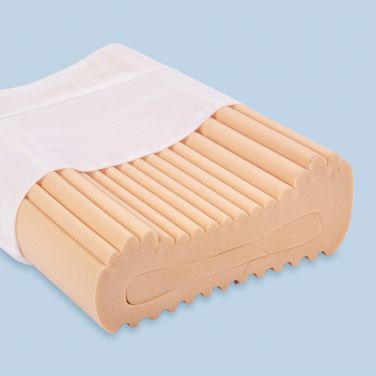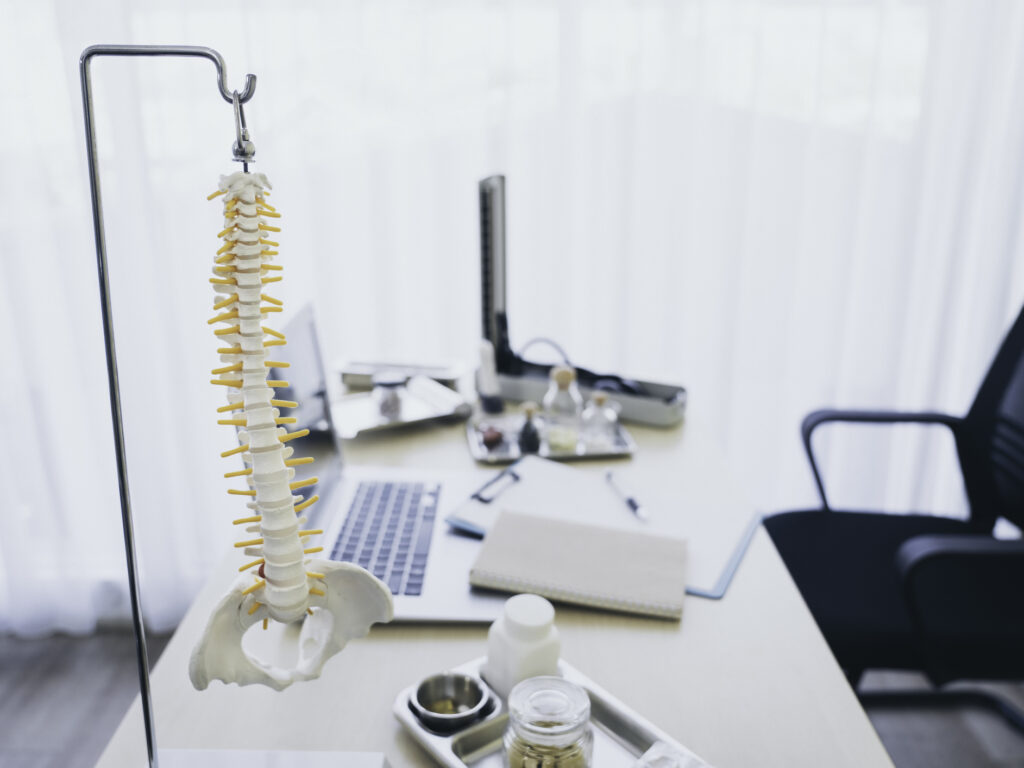Lower Back Pain
Daniel De Jesus2025-01-07T21:55:14+11:00Lower Back pain is one of the most common health complaints worldwide, affecting millions of people across various age groups and occupations. In Australia alone, over 4 million people are estimated to be living with back problems. The causes of Lower back pain can be complex, often involving a range of musculoskeletal, and neurological factors, leading to chronic pain and reduced mobility. Some of the most common causes of lower back pain that we see in our clinic involve pain producing structures such as disc disc bulge and disc tears, facet joints, and myofascial pain such as the Quadratus Lumborum (QL), Iliopsoas, and paraspinal muscles trigger points,
Common Causes of Back Pain
Lower Back pain also traditionally know as “Lumbago” may arise from a single traumatic event or develop over time due to repetitive overuse, such injuries include poor posture, muscle asymmetry, degenerative changes, or repetitive strain. Major contributors to lower back pain include:
- Muscle Strain and Sprain
- Disc Issues
- Facet Joint Pain
- Poor Biomechanics
- Poor Posture
Several important structures and muscles play important roles in stabilising the lower back and are commonly implicated in pain. Let’s discuss the most affected areas:
Quadratus Lumborum (QL)
The QL is a deep muscle in the lower back that attaches from the 12th rib down to your pelvis and onto the lumbar vertebrae. It helps stabilise the lower spine, facilitates lateral bending, and supports the pelvis during movement. Dysfunction or tension in the QL often manifests as a deep, aching pain in the lower back and may radiate toward the hips or upper gluteal region or even the groin on the same side. Overuse, poor posture, or repetitive motions can lead to trigger points or muscle tightness in the QL.
Iliopsoas
The Iliopsoas, composed of the psoas major and iliacus muscles, is one of the primary seven hip flexors. It connects the lumbar spine to the femur and contributes to lumbar spine stability, particularly during hip flexion. Tightness in the Iliopsoas often results from prolonged sitting, which shortens the muscle and creates tension. A tight Iliopsoas can compress the lumbar spine, leading to lower back discomfort, increased lumbar lordosis (curvature), and even referred pain to the thigh or knee.

Paraspinal Muscles
The paraspinal muscles run vertically along the spine, providing essential support for posture and spinal movement. They include the erector spinae, multifidus, and rotators, which stabilise the spine during lifting, bending, and twisting. Chronic stress, poor lifting techniques, or inadequate support during movement can lead to tightness, spasms, or muscle fatigue in the paraspinal muscles, resulting in lower back pain or a sensation of stiffness.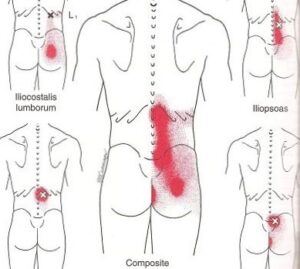
Facet-Mediated Pain
Facet joints are small joints on the back of each vertebra that allow limited motion while providing stability. Facet-mediated pain is often a result of trauma, arthritis, or degeneration, which can inflame the joints and lead to localised or radiating discomfort. This pain typically worsens with prolonged standing, extension (backward bending), or rotation of the spine. Facet pain can mimic symptoms of disc-related issues, However the recovery is often much shorter than a Disc injury.
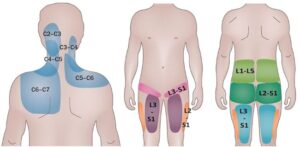
Disc Bulges and Their Impact on Sciatica
Intervertebral discs are cushions between vertebrae that act as shock absorbers. When a disc bulges or herniates, it can compress nearby nerves, especially in the lower spine where the sciatic nerve originates. Sciatica, a condition characterised by radiating pain from the lower back through the buttocks and down the leg, often occurs when the bulging disc irritates the sciatic nerve. This condition can cause numbness, tingling, or weakness along the leg and may significantly impact mobility.
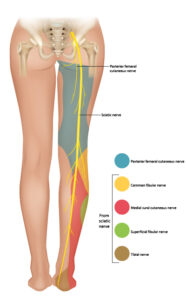
Chiropractic Solutions for Effective Back Pain Relief
At In Good Hands Chiropractic, we employ a range of techniques to address back pain effectively, targeting muscle imbalances, joint dysfunction, and nerve irritation for immediate relief. We can also provide you with rehabilitation to strengthen the affect areas to stop the problems re-occurring further down the track.
Dry Needling
Dry needling involves the insertion of fine needles into specific trigger points within muscles to release tension and promote healing. This technique is particularly effective for treating myofascial pain in muscles like the QL, Iliopsoas, and paraspinal muscles. Dry needling helps reduce muscle tightness, improve blood flow, and decrease pain by stimulating the body’s natural healing processes.
Spinal Manipulation
Chiropractic manipulation, also known as an adjustment, is a hands-on technique that restores proper alignment and movement to spinal joints, especially those in the lower back. Manipulation can alleviate facet-mediated pain by releasing tension in the facet joints and relieving pressure on nerves. It improves joint range of motion, reduces muscle tension, and encourages improved mobility adbn a reduction in pain.
Soft Tissue Release
Soft tissue release techniques focus on relieving muscle tension, breaking up scar tissue, and enhancing flexibility. Our chiropractors use techniques such as myofascial and active release techniques, trigger point release, and muscle stretching to alleviate tension in the QL, Iliopsoas, and paraspinal muscles. By addressing muscle tightness, soft tissue release aids in restoring normal muscle function and reducing pain, particularly when combined with other treatments such as exercise.
Rehabilitation Exercises
Rehabilitation is essential for long-term pain relief and injury prevention. At In Good Hands Chiropractic, we provide tailored rehabilitation programs that strengthen your back and surrounding structures, improve mobility and flexibility, and promote better postural alignment. Strengthening exercises can reduce strain on the lower back, while stretching and mobility routines help maintain balance in muscles that connect to the hips such as the Iliopsoas and paraspinals. Additionally, rehabilitative exercises promote joint stability and support the spine’s natural curvature, minimising the risk of future injuries.
When to Seek Chiropractic Care for Back Pain
If you’re experiencing persistent back pain that limits your daily activities, radiates to your legs, or does not improve with rest, chiropractic care may offer effective, non-invasive relief. Or if your simply not happy or getting the results that you deserve with your current practitioner.
At In Good Hands Chiropractic, our experienced practitioners perform a thorough assessment, identify the root cause of pain, and create a personalised treatment plan tailored to your needs. We focus on improving your functional mobility, reducing pain, and helping you return to your daily activities with confidence.
Why Choose In Good Hands Chiropractic?
Our clinic, located in Petersham, NSW, specialises in comprehensive and compassionate care for back pain sufferers. We take pride in combining our knowledge of musculoskeletal health with advanced chiropractic techniques to deliver high-quality care. Whether you need relief from muscle tension, help managing sciatica, or support for facet-mediated pain, our team is equipped with the tools and expertise to help you regain control of your health.
LowerBack pain can disrupt your quality of life, but with the right approach, effective pain free recovery is possible. Understanding the underlying causes, such as muscular tightness, joint dysfunction, or disc bulges, is essential for targeted and sustainable treatment. At In Good Hands Chiropractic, our team uses a combination of dry needling, spinal manipulation, soft tissue release, and rehabilitative exercises to address back pain holistically. Don’t let lower back pain hold you back—take the first step toward recovery by booking an appointment online and discover how our chiropractic care can help you achieve lasting relief.



